Different Kinds of Kitchen Knives and Their Uses With Pictures
Sharp kitchen knives are among the most basic and most important tools every home cook should own. If you've ever watched a chef at work, you've probably seen the many types of knives they keep on hand. From tiny paring knives to enormous cleavers, every one of them seems to have its own job, but how many of these knives are really necessary in a home kitchen?
This simple guide pares down the list to just six types of knives to keep in your kitchen, plus expert tips for how to keep them in tip-top shape!
6 Types of Knives to Keep in Your Kitchen
With these basic blades on hand, you can prepare just about anything, from a simple family dinner to a five-course meal.
The Chef's Knife

If you could only have one knife in your kitchen, make it the chef's knife. In fact, there are so many uses for a chef's knife, it's often referred to as the most important tool in the kitchen. While it's not ideal for all jobs, it's a powerful multitasker capable of handling chopping, slicing, dicing and mincing with ease.
Look for a chef's knife with a blade that measures eight to ten inches long and curves upward to a pointed tip. This curve is referred to as the "belly" and allows for an easy rocking motion that makes all that slicing and dicing much more fluid.
Knife Knowledge 101: How to Use a Chef's Knife
The Santoku Knife
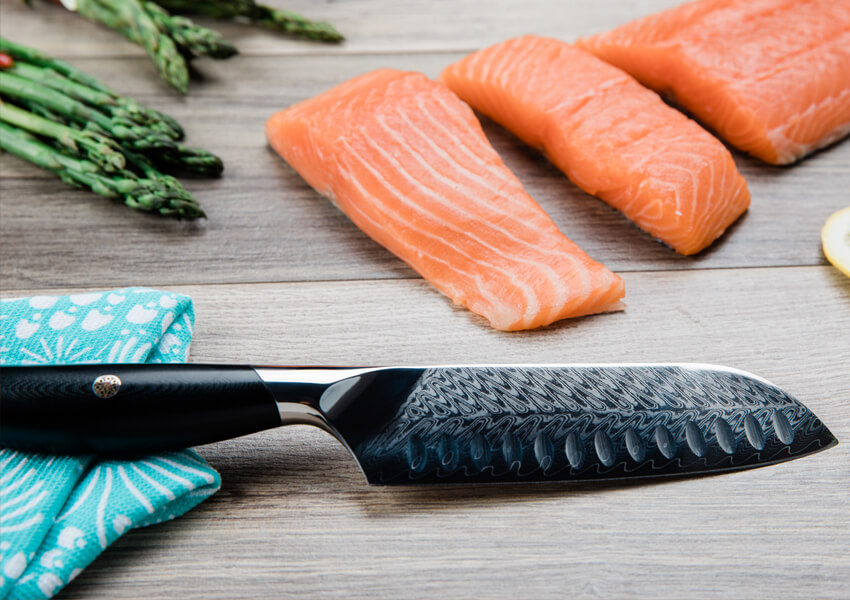
The Santoku knife is a Japanese multi-purpose knife that's also great for chopping vegetables, slicing fish and other general kitchen tasks. It's shorter than a chef's knife — only five to seven inches long — and doesn't have the heft that makes chef's knives great for big jobs or tough ingredients like sweet potatoes, spaghetti squash and other gourds, but the Santoku does have other features that make it a kitchen essential.
The Santoku knife is smaller and more lightweight compared to a chef's knife, making it a great choice for cooks with small hands. It also features a Granton or "scalloped" edge which allows tiny air pockets to get between the blade and your ingredients to prevent them from sticking between each slice.
When it comes to using this Japanese-style chef knife, there are some differences in the chopping method when compared to the traditional Western-style chef's knife, so it's best to get a good handle on how to use each knife to get the most out of what they have to offer.
Knife Knowledge 101: How to Use a Santoku Knife
The Paring Knife
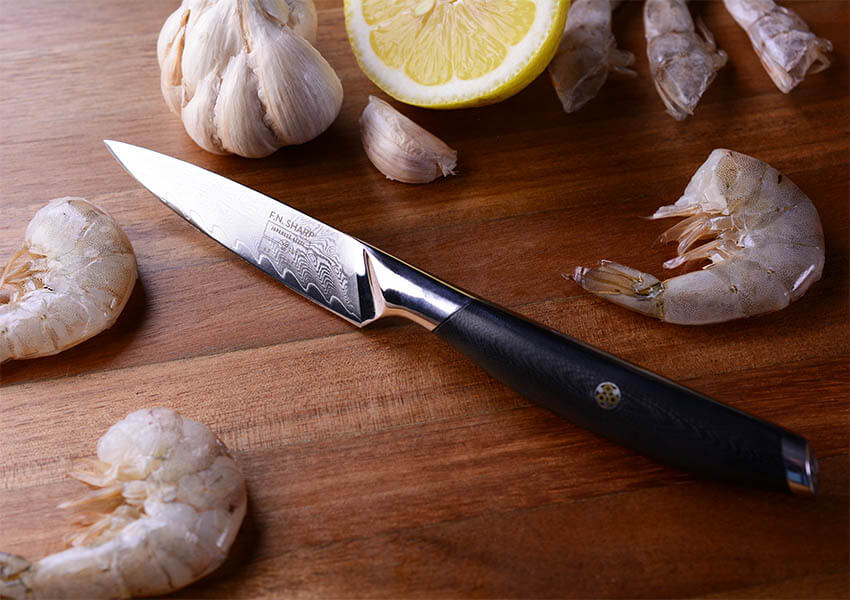
While there are many uses for a paring knife, it is almost exclusively used for small fruits, vegetables and detailed work. With a thin, short blade measuring only a few inches long (usually two to four), it's not a good candidate for chopping or mincing larger items but is perfect for smaller ingredients like garlic and shallots. It's also great for peeling fruits and vegetables, segmenting citrus, hulling strawberries, deveining shrimp, and scoring breads, pies, and meats.
Knife Knowledge 101: How to Use a Paring Knife
The Utility Knife
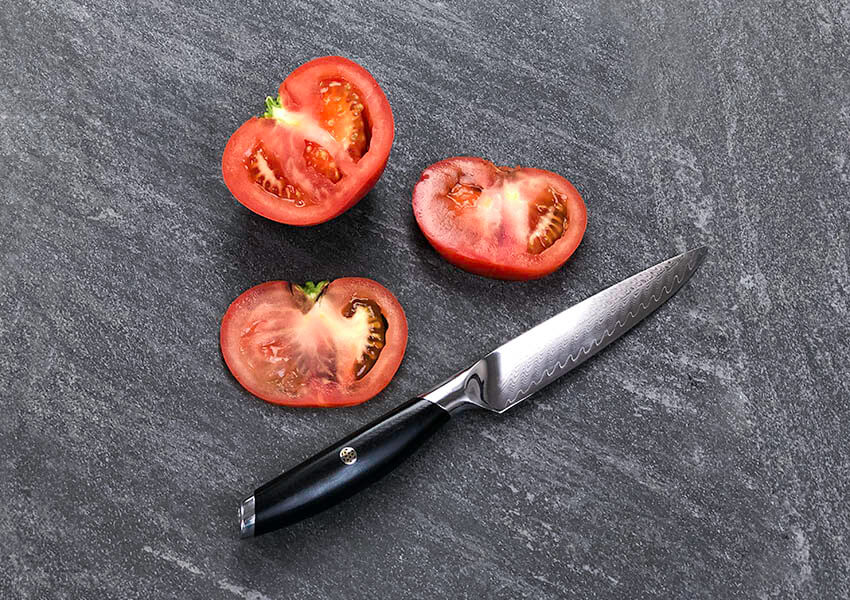
Not to be confused with a pocket utility knife, the kitchen utility knife lands somewhere between the paring knife and the chef's knife in terms of size. The blade can measure anywhere from four to seven inches long, and though it's built for lighter work than the chef's knife, it is similarly shaped and makes an excellent multi-purpose tool.
A utility knife is ideal for cutting through mid-sized fruits and veggies, like lemos, limes, cucumbers, zucchini and summer squash. It's also a great candidate for slicing meats and cheeses for a charcuterie board, tomatoes for salads and sandwiches (hello BLT), and for slicing sandwiches, bagels and other bread items in half.
Kitchen utility knives, along with steak knives, often come with a serrated edge based on the common misconception that this type of knife edge type is a must for slicing through tomatoes, breads and meats. But truth be told, a straight-edged utility knife can do these jobs just the same, if not better, as long as it's (F.N.) sharp!
Knife Knowledge 101: How to Use a Kitchen Utility Knife
The Boning Knife
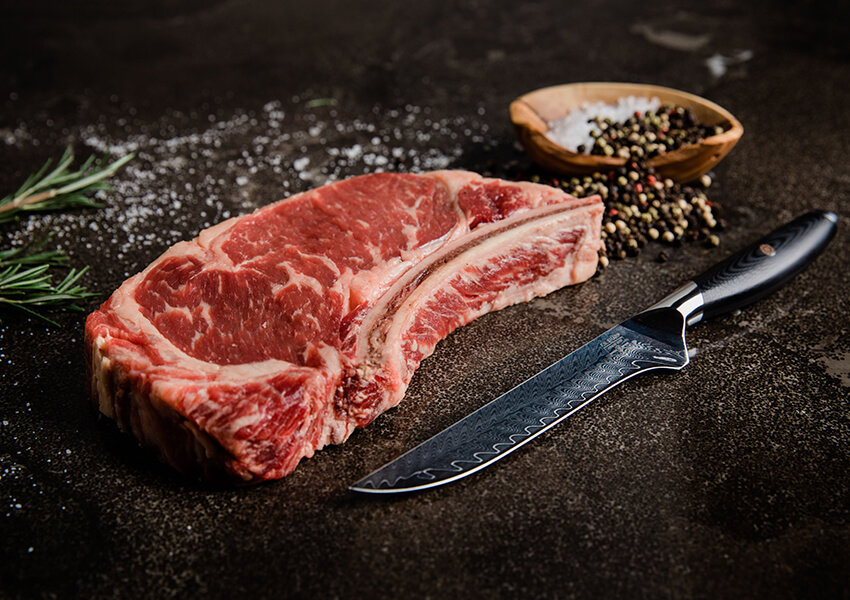
For meat-lovers, the boning knife is an absolute must. The thin, curved blade often has a bit of flex to it, making it easier to slice closer to the bones and cleanly separate the meat without losing too much of the flesh. It's also perfect for delicately trimming fat, while its slender tip allows you to easily break away the cartilage in joints. Some professional bakers also prefer using a boning knife to carve cakes, core cupcakes and cut cookie dough into shapes.
Boning knives are also sometimes confused with fillet knives, which are designated for working with fish. But, you'll actually find some knives are designed as a cross between a boning knife and a fillet knife (like what you'll find here at F.N. Sharp to give you the best of both worlds in one knife.
Knife Knowledge 101: How to Use a Boning Knife
The Bread Knife
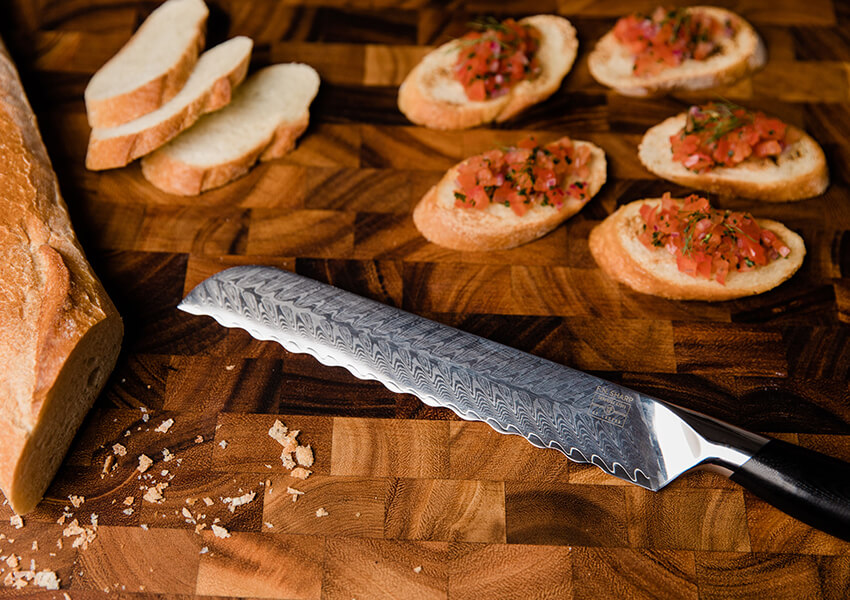
The name here is a bit of a misnomer. With its eight- to ten-inch serrated blade, a bread knife does a spectacular job of slicing through all types of bread, of course, but it has plenty of other uses in the kitchen.
When it comes to baking, the bread knife is the perfect tool for leveling cakes, as its long blade can slice through an entire layer in just one pass. It's also a great candidate for large, thick-skinned foods like melons, squashes and other tough fall vegetables, The serrations on the blade allow you to easily slice through the tough skin without applying too much pressure, while the length of the blade allows you to cut even slices.
Knife Knowledge 101: Does Your Bread Knife Have the Right Edge?
6 Tips for Taking Care of Your Kitchen Knives
Now that you know all about the essential knives to keep in your kitchen, here are some tips for how to keep them in perfect working order.
1. Keep Them Clean and Dry
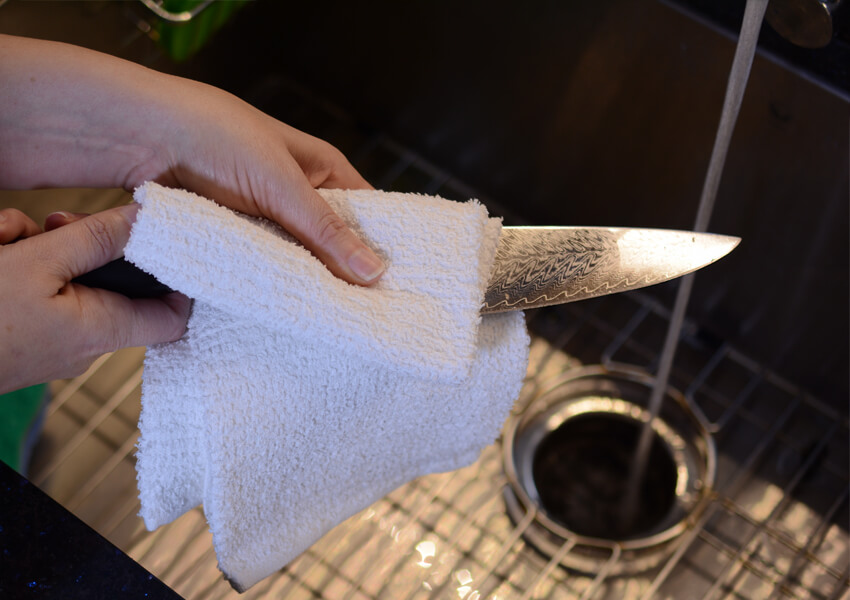
While this may sound simple, and it is, the truth is that even a little residual water or soap left on your knives can have a negative lasting effect. So even if they're designed to withstand the harsh environment of the dishwasher (like what you'll find at F.N. Sharp), it's still best to hand wash your knives immediately after use with warm, soapy water and wipe them completely dry before putting them back in their place. Just be sure to avoid abrasive or colored sponges when washing your knives as this can scratch the metal and even damage or discolor the blade.
2. Keep Them Out of the Dishwasher
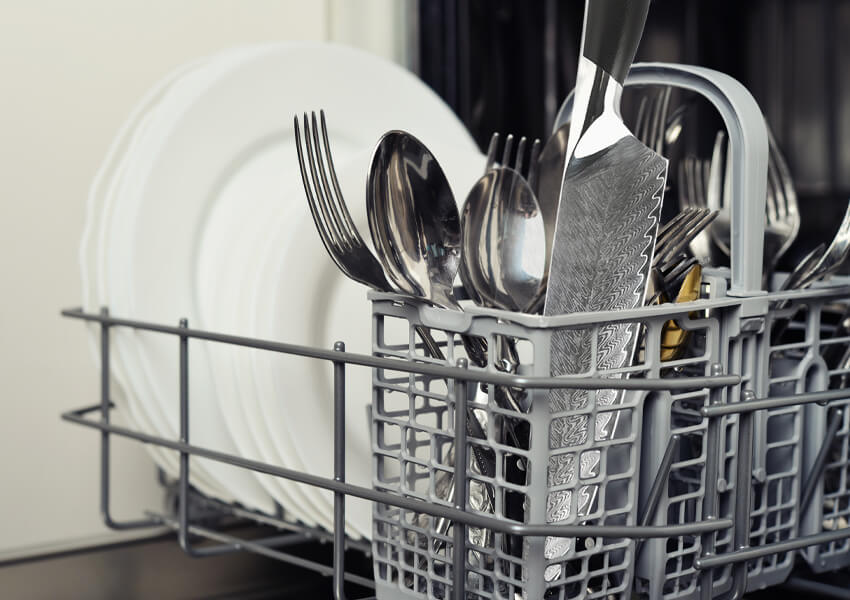
As mentioned before, always hand wash those knives! A dishwasher is a harsh place for delicate tools like kitchen knives. They can bang around and get scratched and chipped while hitting other utensils and the chemicals in detergent can discolor the metal of the blade, while the water that sits on the blade while drying can easily turn to rust. And don't forget about the heat! High temperatures can destroy the temper of the steel by making it expand and contract, which can weaken and dull the blade while also increasing the chances of rust.
3. Keep Them Out of the Sink
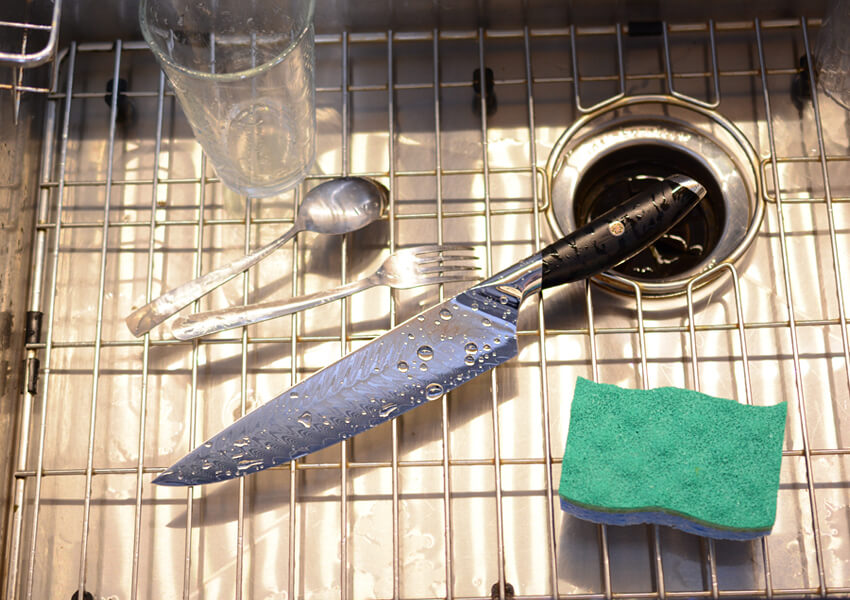
To protect yourself (and your knives), never leave your kitchen knives in the sink, especially a sink full of water! Leaving your knives soaking in water is not only dangerous, but can wreak havoc on your knives – not to mention the possibility of forgetting about them while doing dishes and accidentally grabbing the sharp blade. Even worse, curious little hands can also unknowingly reach into the sink and meet a sharp knife.
Leaving your knives in sitting water also isn't good for the blades either (remember the rust?), so always be sure to hand wash and dry after each use. Even if the sink is empty, it still isn't the best place for a knife. If it ends up bumping the side of the sink or other dishes, you may be left with chips, scrapes, or a damaged blade overall.
4. Keep Them Out of the Drawer
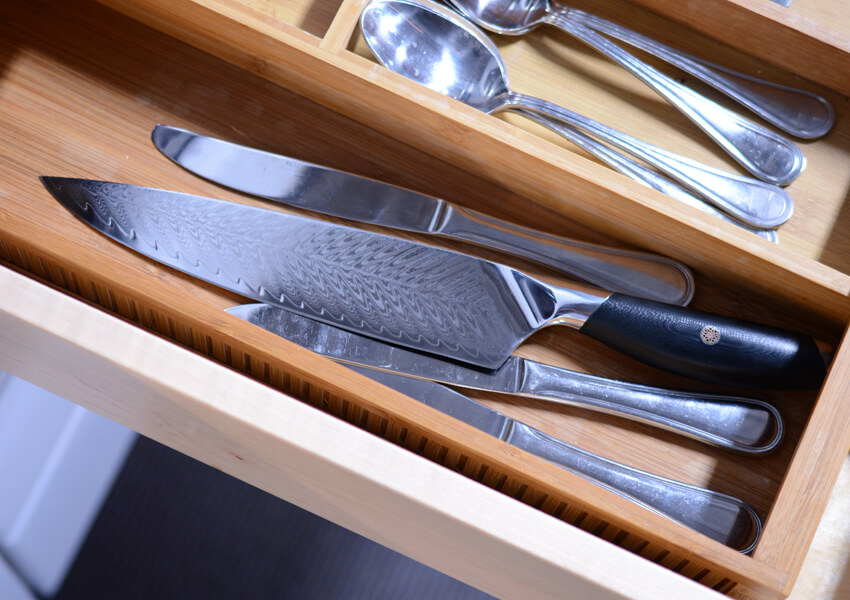
Properly storing your knives is important, as well. If you have a knife block, be sure to use it and make sure your knives are dry before storing them. If you don't have a knife block, you may want to invest in one or find other options for storing your knives safely so you can resist the urge to throw them in a drawer with other utensils.
For the same reason as sitting in a sink, storing your knives loosely in a drawer can be dangerous for you as well as the blade. If your only storage option is a drawer, then invest in some knife covers so you can protect the blades – and your fingers.
Store and Showcase Those Knives: The F.N. Sharp Magnetic Knife Block
5. Keep Them on the Right Cutting Boards
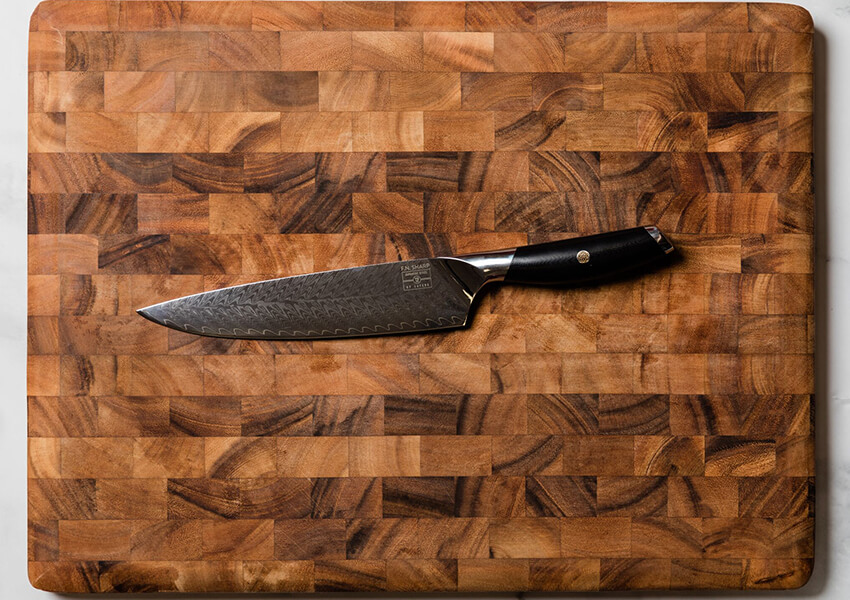
Using cutting boards is essential in all kitchen prep, and choosing the right one is essential for keeping your knives sharp. Look for cutting boards made of wood (like this Acacia wood one from F.N. Sharp), bamboo, or plastic. Never use granite, marble, glass or steel countertops as a cutting surface for meal prep. These materials are extremely hard and will roll the edge of your blade, dulling your knives very quickly. Wood and plastic are softer materials that yield to the edge of your knife and protect the sharpness of your blade.
6. Keep Them Sharp
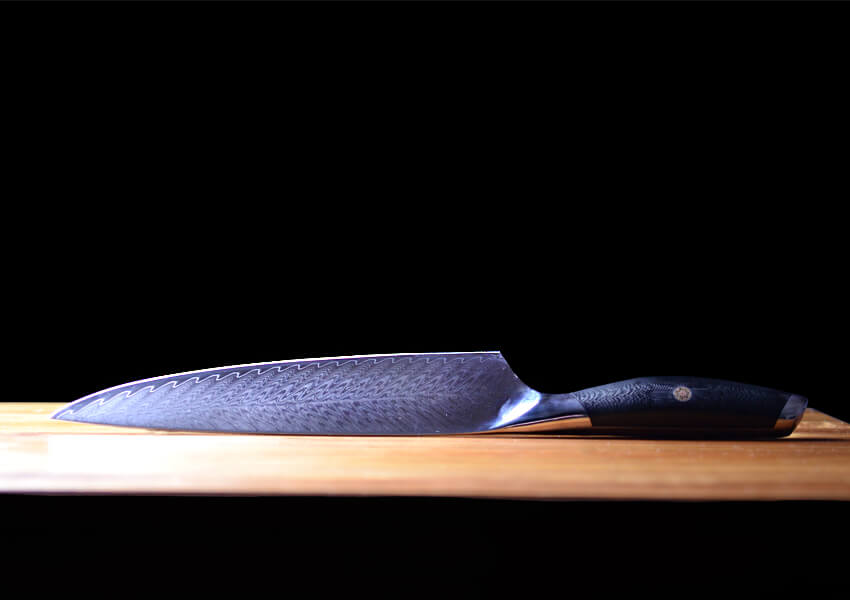
Your kitchen knives can be the most important and yet the most dangerous tools in the kitchen. Even if you're careful, using a dull kitchen knife can be extremely dangerous for your fingers, so it's vital to keep them sharp.
When a knife goes dull, it becomes both inefficient and dangerous. If your knife can't slice right through a piece of paper, it's not sharp enough to cleanly cut through your food, either. Instead, it forces you to apply more pressure, increasing your chances of losing control over the knife. This means it can also slip and slide all over ingredients with tough or slippery skins – hello onions! – which can result in cutting your fingers rather than your food.
And just because a knife is dull, it doesn't mean it can't cut through, or rather "rip through" your skin! It can actually leave you with a wider, jagged cut that takes much longer to heal thin the clean cut you'd get with a sharp knife. So make sure you keep those knives (F.N.) sharp!
For most cooks, sharpening every four months is average, and there are a few different options for sharpening your kitchen knives . However, for the inexperienced, the best option for keeping your knives sharp is to first invest in quality knives, then have them professionally sharpened as needed.
If you need more tips on what to look for in a quality knife, then check out our kitchen knife buying guide – or get all of the knives you need right now with F.N. Sharp's 6-Knife Set!
Bad Habits to Avoid in the Kitchen: The F.N. Sharp Kitchen Knife Safety Guide
Different Kinds of Kitchen Knives and Their Uses With Pictures
Source: https://fnsharp.com/blogs/fns/types-of-kitchen-knives